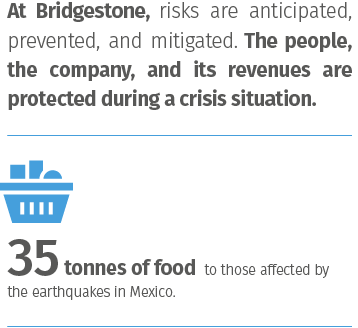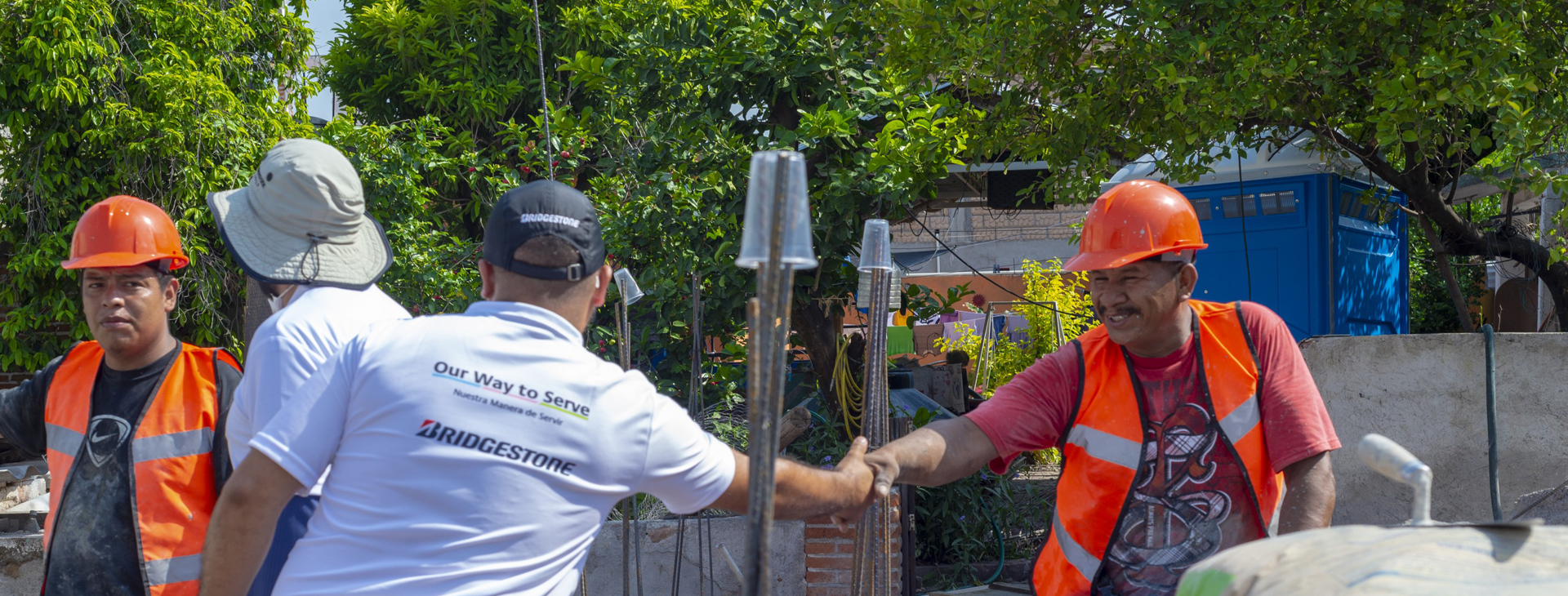
Bridgestone Mexico through its crisis management program contributes to the achievement of the SDG 16, Target 16.6: Develop effective, accountable and transparent institutions at all levels.
Crisis management is key to ensuring business continuity; therefore, Bridgestone Japan divides potential risks into two categories: business strategy and operational risks. Bridgestone has prepared an emergency response plan for critical situations that affect operations in both cases. This plan was designed by Bridgestone Americas with the purpose of responding to situations that:
• Require actions by the national leaders of the country affected to resolve issues that may produce an impact on human health, safety, the environment, assets, and the operation’s reputation.
• Require actions by organizations in the affected country with the support and leadership of Bridgestone Americas Tire Operations Latin America (BATO-LA) or other company businesses operating in the country, when necessary.
The emergency response plan is managed and evaluated by a Crisis Committee whose objective is to provide the necessary tools to the decision-makers, to ensure a quick, effective and structured response.
The committee is a vital element to ensure business continuity during critical times. Its particularity lies in the fact that there are issues that must be addressed by the corporate headquarters, and others for which the region assumes the authority and responsibility to take actions and report on these matters.
Both, Cuernavaca and Bandag Tre-Retread plants, have been certified by the U.S. Customs-Trade Partnership against Terrorism, (C-TPAT). They also have the Bridgestone certificate to serve as an Authorized Economic Operator in Mexico validated by the local Tax Administration Service.

Actions in Response to Earthquakes
The company activated this program in 2017, to ensure the company’s business continuity after earthquakes shook several states in Mexico. No structural damages were found at the plant in Cuernavaca; however, a nearby fence collapsed due to external factors and the Civil Protection Agency restricted the power supply as a precautionary measure. Once power was reestablished, the plant’s operations went back to normal.
In addition, because of the major havoc suffered by its neighboring community, Bridgestone Mexico team collected and donated 100 kg of food, 300 raincoats for volunteers, and MXN 89,000 through the Red Cross. The company also took a needs’ census among its employees in Morelos who suffered serious damage to their homes and provided aid with digital wallets.
Bridgestone México joined forces with Habitat for Humanity Foundation in México and donated USD 161,000 to rebuild 16 houses in the municipality of Tlaquiltenango, one of the towns that suffered the greatest damage in the State of Morelos.


